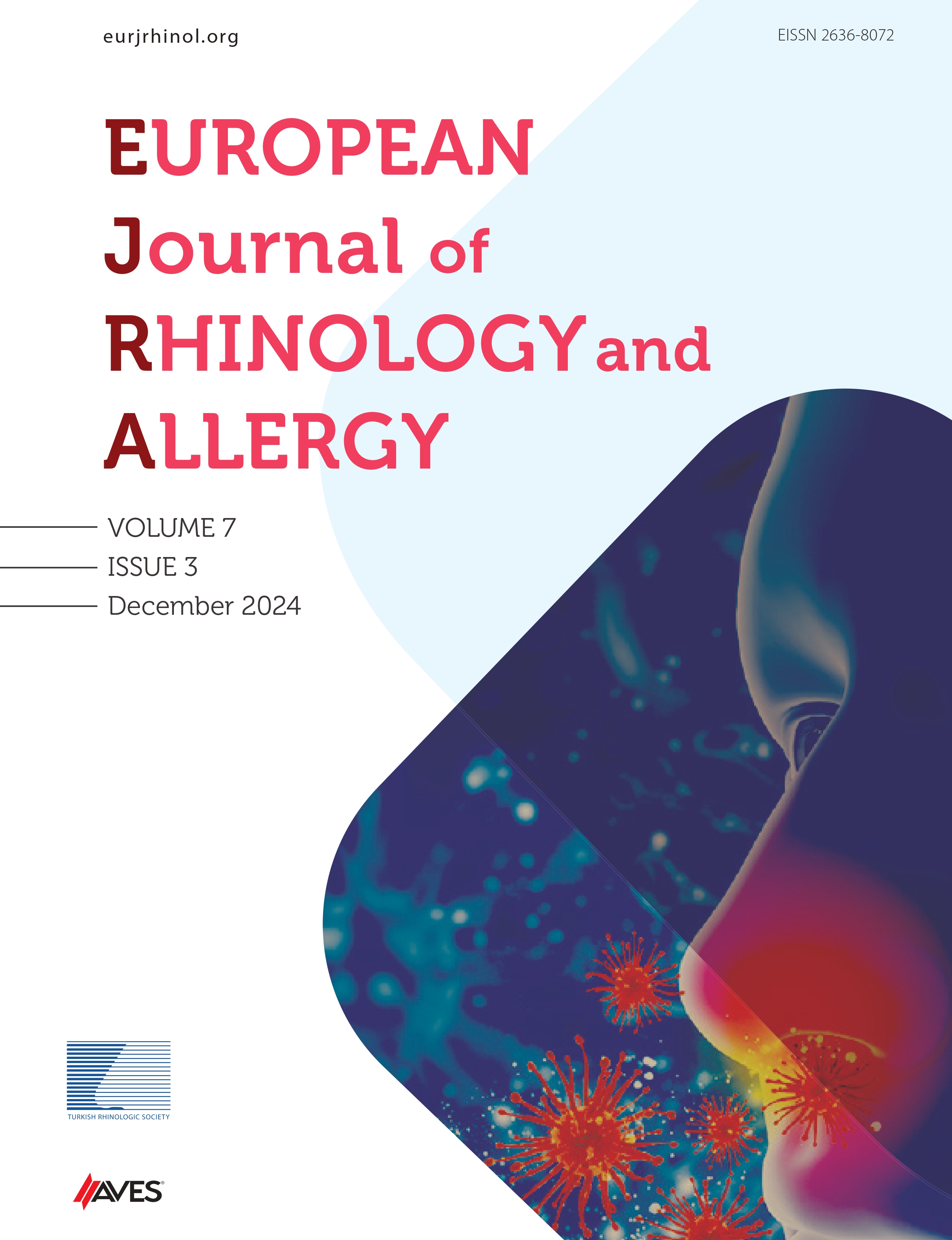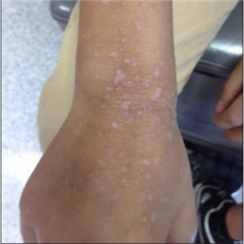Abstract
Hyperimmunoglobulin E syndrome (HIES) is described as a primary immune deficiency that consists of recurrent skin and lung infections, eczema, and excessively elevated serum IgE. Most cases of HIES are sporadic, although it can be inherited as autosomal dominant and autosomal recessive traits. Here, we discuss that HIES was presented with a diffuse granulomatous lesion that was restricted in the nasal vestibule region in the first admission, followed by the nasal cavity and nasal septum anterior portion, lower lateral cartilages, and columella skin. A 13-year-old male patient who had atopic dermatitis and celiac disease presented with nasal swelling in the middle of the nose for 1.5 months. After an incisional biopsy, pathological examination was compatible with “granulation tissue with inflammatory infiltration, which contained a very rich abscess and eosinophils.” Genetic examination demonstrated DOCK 8 mutation. Systemic findings were added to the clinical progression at the later stages of illness. Primer immune deficiency should be suspected in vegetative granulomatous lesions that are common in infected areas such as the nasal vestibule and the anterior region of the nasal cavity in the pediatric group. This is especially important when “inflammatory granulation tissue” is reported in recurrent biopsies.
Cite this article as: Bozacı Kılıçoğlu M, Aydemir L, Öztürk E, Kara H, Çomoğlu Ş. Atypical Nasal Manifestation of Primary Immune Deficiency in A Child. Eur J Rhinol Allergy 2019; 2(1): 21-3.

.png)

.png)
